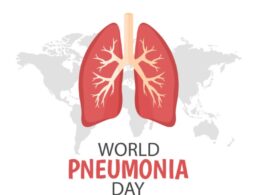JAMA Internal Medicine
Marion Nestle, PhD, MPH1
August 1, 2022
Site editor:
Joaquim Cardoso MSc
Health Transformation Journal
September 7, 2022 (hsp.harvard)
Nearly three-fourths of adults in the US are overweight, with more than 40% meeting criteria for obesity
Centers for Disease Control and Prevention data indicate that nearly three-fourths of adults in the US are overweight, with more than 40% meeting criteria for obesity (https://www.cdc.gov/obesity/).
Overweight is now the norm.
We can argue about the cut point at which excess body weight raises risks for type 2 diabetes, cardiovascular disease, other chronic conditions, and severe outcome of COVID-19, but these risks are elevated and exacerbate health inequality.1
We can argue about the cut point at which excess body weight raises risks for type 2 diabetes, cardiovascular disease, other chronic conditions, and severe outcome of COVID-19, but these risks are elevated and exacerbate health inequality.1

At issue is how to prevent unhealthful weight gain.
Preventing obesity is complicated by its multiple physiological, behavioral, and environmental causes.
Its immediate cause is consumption of calories in excess of those expended through basal metabolism, food metabolism, and physical activity.
Because metabolism stays relatively constant at any given age, only dietary intake and physical activity are amenable to deliberate change.
Because metabolism stays relatively constant at any given age, only dietary intake and physical activity are amenable to deliberate change.
Prevention means eating less, moving more, or doing both.
But moving more to compensate for excess caloric intake is challenging for most people; it takes approximately 1 mile of walking or running to expend 100 calories — the amount in 2 small Oreo cookies.
And increasing activity sometimes results in increased food consumption.
Thus, losing weight almost always requires eating less.
Thus, losing weight almost always requires eating less.

Attempts to eat less, however, confront an environment designed — for business reasons — to counter such efforts.
This environment makes food available for sale everywhere, at all times of day, in large portions, in irresistibly delicious forms, and at relatively low cost; it especially promotes consumption of highly profitable, ultraprocessed junk foods, now significantly associated with increased caloric intake, weight gain, and weight-influenced chronic diseases.2
This environment makes food available for sale everywhere, at all times of day, in large portions, in irresistibly delicious forms, and at relatively low cost; …
… it especially promotes consumption of highly profitable, ultraprocessed junk foods, now significantly associated with increased caloric intake, weight gain, and weight-influenced chronic diseases.
Attempts to counter this environment directly confront food industry marketing imperatives and invariably generate opposition.
Perhaps for this reason, federal nutrition policies, such as dietary guidelines and food labels, target the personal food choices of individuals.
The Affordable Care Act of 2010, for example, mandates calorie labeling at chain restaurants under the assumption that when people know the number of calories in food items, they will make better choices.
Unfortunately, studies comparing calorie purchases before and after the act’s implementation have tended to show either no change or decreases too small to be expected to lower overall caloric intake, let alone to reduce or stabilize body weight.3

Would calorie labeling at supermarkets produce more impressive effects?
In the study by Petimar et al4 in this issue of JAMA Internal Medicine, the authors reported using more than 4 billion sales records from 173 supermarkets to evaluate calorie purchases before and after institution of labeling.
Since 2006, a supermarket chain in several Northeastern states has been collecting data on the effectiveness of its Guiding Stars system to promote sales of healthier products (www.guidingstars.com).
Petimar et al4 used these and other sales data to examine purchases before the chain introduced calorie labeling in April 2017 and for 7 months after.
The investigators focused specifically on sales of calories from baked goods (eg, muffins, donuts), deli items (eg, meats, cheeses), and prepared meals (eg, sandwiches).4
They observed a 5.1% decrease in calories from bakery items, an 11% decrease in calories from prepared deli items, but no change in calories from meals or side dishes.
The observed decreases in percentages are larger than results seen in most other calorie-labeling studies, but translate to a decrease of 10 calories per bakery item and 18 calories per prepared deli item — hardly enough to seem capable of having any influence on body weight.
….researchers … examined purchases before the chain introduced calorie labeling in April 2017 and for 7 months after.
They observed a 5.1% decrease in calories from bakery items, an 11% decrease in calories from prepared deli items, but no change in calories from meals or side dishes.

These results are fairly similar to those from studies of calorie labeling at fast food restaurants and of other educational efforts to improve the food choices of individuals.
Such interventions may have large effects on some people — I, for example, pay close attention to calorie labels — but their population-based benefit appears small.
For calorie labeling to be effective, people need to know the number of calories they need in a day and how the calories in specific items relate to that total — more information than many are likely to have.
They also must be willing and able to deprive themselves of attractive, delicious food when they have reached their total caloric needs.
For calorie labeling to be effective, people need to know the number of calories they need in a day and how the calories in specific items relate to that total — more information than many are likely to have.
They also must be willing and able to deprive themselves of attractive, delicious food when they have reached their total caloric needs.

A basic tenet of public health is that education is necessary but rarely sufficient for behavior change; education works better when supported by policies.5
A basic tenet of public health is that education is necessary but rarely sufficient for behavior change; education works better when supported by policies.
In recent years, federal and local governments have attempted to go beyond just educating about personal choice; they have addressed the “eat more” food environment by setting nutrition standards for school meals, taxing sodas, and improving access to healthier foods.
But studies of such interventions also demonstrated only small improvements.
One recent analysis of the outcomes of moving a supermarket into a low-income area, for example, reported a 1% reduction in weight-for-height among children living close to the supermarket compared with children who had more limited access.6
In recent years, federal and local governments have attempted to go beyond just educating about personal choice; …
they have addressed the “eat more” food environment by setting nutrition standards for school meals, taxing sodas, and improving access to healthier foods.
But studies of such interventions also demonstrated only small improvements.
Løvhaug et al3 systematically reviewed reviews of data on single-policy interventions aimed at reducing dietary inequalities; these included not only educational policies (ie, guidelines, labeling) but also environmental policies (ie, food reformulation, marketing restrictions, price strategies, access).
They judged the evidence for nearly all of these policies as too weak to evaluate effects; only soda taxes seemed to produce meaningful results.
researchers systematically reviewed reviews of data on single-policy interventions aimed at reducing dietary inequalities; …
They judged the evidence for nearly all of these policies as too weak to evaluate effects; only soda taxes seemed to produce meaningful results.

My interpretation of the current status of obesity prevention research is that any single policy intervention is unlikely to show anything but small improvements.
Pessimists will say such interventions are futile and should no longer be attempted.7 Optimist that I am, I disagree.
We cannot expect single interventions to prevent population-based weight gain on their own, but they might help some people — and might help even more people if combined simultaneously with other interventions.
We cannot expect single interventions to prevent population-based weight gain on their own, but they might help some people — and might help even more people if combined simultaneously with other interventions.
For example, Liu et al8 conducted a multifactor intervention among Chinese school children, with reduced body weight as the main outcome measure.
The investigators taught the children about physical activity and avoiding sugary beverages and junk food; regularly measured height and weight; set policies to restrict sales of unhealthy snacks and drinks; and engaged families in promoting healthy practices outside of school and in tracking children’s activity and weights.
The results after 1 year: an impressive 27% reduction in obesity prevalence among children enrolled in the intervention schools compared with a 6% reduction among children in the control schools.
The investigators taught the children about …several interventions …
The results after 1 year: an impressive 27% reduction in obesity prevalence among children enrolled in the intervention schools compared with a 6% reduction among children in the control schools.
As another example, the Blue Zones Project works with cities to apply multiple interventions based on observations of healthful practices common to long-lived population groups in places like Okinawa, Japan; Sardinia, Italy; and Loma Linda, California.
Since 2012, Blue Zones has engaged with city planners in several Southern California coastal towns to establish smoking bans, make streets walkable and bike friendly, increase access to healthier food in restaurants, establish education programs in grocery stores, and promote social support for these efforts.
The project reports significantly reduced obesity and cardiovascular risk factors among people in the intervention cities compared with those in California as a whole.9
As another example, the Blue Zones Project works with cities to apply multiple interventions based on observations of healthful practices common to long-lived population groups in places like Okinawa, Japan; Sardinia, Italy; and Loma Linda, California.
The project reports significantly reduced obesity and cardiovascular risk factors among people in the intervention cities compared with those in California as a whole

However preliminary these studies may be, they suggest that multiple-policy approaches are well worth consideration.
Widespread policy efforts to reduce intake of ultraprocessed foods through a combination of taxes, warning labels, marketing and portion-size restrictions, dietary guidelines, and media education campaigns, …
… along with policies for subsidizing healthier foods and promoting greater physical activity, should be tried; they may produce meaningful effects.10
Widespread policy efforts to reduce intake of ultraprocessed foods through a combination of taxes, warning labels, marketing and portion-size restrictions, dietary guidelines, and media education campaigns, …
… along with policies for subsidizing healthier foods and promoting greater physical activity, should be tried; they may produce meaningful effects.
Politically difficult? Of course. Politically impossible? I do not think so.
Unless we keep trying to intervene — and continue to examine the results of our attempts — we will be settling for the normalization of overweight and the personal and societal costs of its health consequences.
Widespread policy efforts to reduce intake of ultraprocessed foods through a combination of taxes, warning labels, marketing and portion-size restrictions, dietary guidelines, and media education campaigns, …
… along with policies for subsidizing healthier foods and promoting greater physical activity, should be tried; they may produce meaningful effects.
References:
See original publication
About the author & affiliations:
Marion Nestle, PhD, MPH1
Department of Nutrition and Food Studies,
New York University, New York
Additional Contributions:
The author thanks Brian Elbel, PhD, MPH, New York University Grossman School of Medicine and New York University Wagner Graduate School of Public Service, for helpful discussions about calorie labeling. This individual was not compensated for their contribution.












